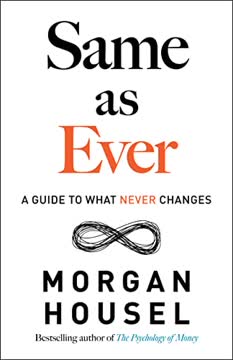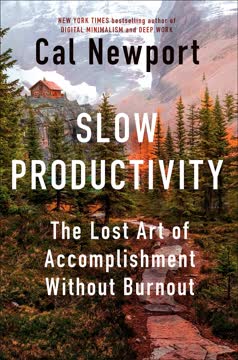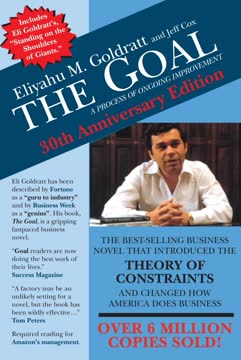Key Takeaways
1. ERP systems alone are not sufficient for business success
Technology is a necessary condition, but it's not sufficient.
Technology implementation is not enough. While Enterprise Resource Planning (ERP) systems provide valuable tools for businesses, they are not a silver bullet for success. Companies must also focus on:
- Changing organizational rules and processes
- Adapting management practices
- Aligning measurements with desired outcomes
Many businesses invest heavily in ERP systems without realizing the full potential of their investment. To truly benefit from technology, companies must be willing to challenge existing paradigms and make fundamental changes to their operations.
2. The importance of focusing on bottom-line impact in technology implementation
Don't confuse reduction in the cost of a transaction line with real cost reduction.
Tangible results matter most. When implementing new technology, businesses often focus on metrics that don't directly translate to bottom-line impact. To ensure real value:
- Prioritize measurable financial outcomes
- Focus on inventory reduction, increased sales, and improved cash flow
- Avoid getting caught up in vanity metrics or technical improvements that don't affect profitability
By consistently tying technology implementations to concrete financial results, companies can justify their investments and drive meaningful change throughout the organization.
3. Overcoming resistance to change through education and demonstration of value
To get the benefits at the time that we install the new technology, we must also change the rules that recognize the existence of the limitation.
Education is key to adoption. Implementing new technology often requires significant changes to established processes and mindsets. To overcome resistance:
- Provide comprehensive education on new concepts and methodologies
- Demonstrate tangible benefits through pilot programs
- Involve key stakeholders in the decision-making process
By focusing on education and clearly demonstrating value, organizations can build buy-in at all levels and ensure successful adoption of new technologies and processes.
4. The power of Theory of Constraints (TOC) in optimizing production and distribution
Luckily for us, not every president has the same opinion.
TOC drives significant improvements. The Theory of Constraints provides a powerful framework for optimizing production and distribution processes. Key benefits include:
- Increased throughput without additional resources
- Reduced inventory levels
- Improved on-time delivery performance
By identifying and addressing bottlenecks in the system, companies can achieve dramatic improvements in efficiency and profitability. The success of TOC implementation at Stein Industries and Pierco demonstrates its potential across various industries.
5. The need for a paradigm shift from selling technology to selling value
We have to switch from selling information technology to selling value.
Value-based selling is transformative. Traditional ERP vendors focus on selling features and functionality. To truly differentiate and succeed in the market:
- Emphasize tangible business outcomes
- Demonstrate how technology drives bottom-line results
- Align implementation with customer-specific value drivers
By shifting the focus from technology to value, BGSoft was able to rapidly gain market share and establish itself as a leader in the ERP industry.
6. The critical role of effective communication in organizational transformation
Scott, it's you.
Open communication is essential. Even in high-performing organizations, breakdowns in communication can lead to misalignment and lost opportunities. To maintain alignment:
- Regular, transparent communication among leadership
- Clear articulation of strategy and rationale for changes
- Active solicitation of feedback and concerns from all levels
By prioritizing open communication, organizations can ensure that all stakeholders are aligned and working towards common goals during periods of significant change.
7. Balancing inventory management with customer service in distribution
We are talking about switching from push to pull.
Rethinking distribution strategies. Traditional inventory management often leads to excess stock and poor customer service. A more balanced approach involves:
- Implementing pull-based replenishment systems
- Holding inventory closer to production
- Daily replenishment based on actual sales
By adopting these principles, companies like Pierco were able to significantly reduce inventory levels while improving customer service and cash flow.
8. The importance of continuous improvement and adaptation in business strategy
We agreed that we need to work on improving the communication.
Constant evolution is necessary. In a rapidly changing business environment, organizations must continually reassess and adapt their strategies. This involves:
- Regular evaluation of market conditions and competitive landscape
- Willingness to challenge existing assumptions and practices
- Proactive development of new capabilities and offerings
By fostering a culture of continuous improvement and adaptation, companies can stay ahead of the competition and capitalize on emerging opportunities in the market.
Last updated:
FAQ
What's Necessary But Not Sufficient about?
- Theory of Constraints: The book is a business novel that explores the Theory of Constraints (TOC) through a software company's challenges, illustrating how addressing constraints can improve performance.
- Business Dynamics: It delves into business growth, market saturation, and aligning product offerings with customer needs, emphasizing strategic thinking in managing complexity and demands.
- Character-Driven Story: The narrative follows characters like Scott Duncan, the CEO, making it relatable and engaging for readers interested in business management.
Why should I read Necessary But Not Sufficient?
- Practical Insights: Offers valuable insights into managing a business, especially in the tech industry, focusing on market dynamics and customer needs.
- Engaging Format: Uses a business novel format to present complex concepts in an engaging way, making lessons easier to digest and apply.
- Focus on Constraints: Highlights the Theory of Constraints, providing a framework for identifying and addressing bottlenecks to improve efficiency and profitability.
What are the key takeaways of Necessary But Not Sufficient?
- Understanding Constraints: Emphasizes identifying and managing constraints to drive growth and efficiency, aligning decisions with business goals.
- Market Awareness: Stresses the need for companies to adapt strategies to maintain growth amidst market saturation, encouraging innovation and market exploration.
- Value Creation: Illustrates the importance of delivering real value to customers, focusing on product impact rather than just features or technology.
What specific methods or concepts are discussed in Necessary But Not Sufficient?
- Theory of Constraints (TOC): Central to the book, TOC posits that every organization has constraints limiting performance, which can be addressed for improved efficiency.
- Drum-Buffer-Rope: Introduced as a scheduling method to manage production processes, synchronizing production with demand to minimize delays.
- Buffer Management: Discussed as a means to protect against variability, strategically placing buffers to absorb disruptions and maintain operational flow.
What are the best quotes from Necessary But Not Sufficient and what do they mean?
- "Be paranoid.": Reflects the need for constant awareness of potential threats, emphasizing proactive planning and risk management for sustained growth.
- "The better it is, the worse it becomes.": Highlights the paradox of increased challenges with success, warning against complacency.
- "Technology is a necessary condition, but it's not sufficient.": Encapsulates the theme that technology must be accompanied by process changes to realize its full potential.
How does Necessary But Not Sufficient address the challenges of growth in a competitive market?
- Market Saturation: Discusses challenges when primary markets become saturated, emphasizing the need for innovation and market exploration.
- Sales Strategies: Highlights the importance of understanding customer needs and delivering value, adapting approaches to remain competitive.
- Operational Efficiency: Illustrates improving efficiency through TOC, streamlining processes, and addressing constraints to enhance performance.
What role do the characters play in conveying the book's messages?
- Scott Duncan: As CEO, Scott embodies leadership challenges in a changing market, reflecting the importance of strategic thinking and adaptability.
- Jay Johnstone: Represents the sales perspective, highlighting effective communication and understanding of customer needs in a competitive environment.
- Lenny Abrahms: Emphasizes technical challenges in product development, aligning technology with business goals, central to the book's themes.
How does Necessary But Not Sufficient illustrate the application of TOC in real businesses?
- Fictional Narrative: Uses characters and scenarios to demonstrate TOC principles in various business contexts, making concepts relatable and actionable.
- Case Studies: Presents case studies of companies implementing TOC, showcasing challenges and solutions to overcome limitations.
- Practical Examples: Shows how organizations can shift focus from local efficiencies to overall system performance for improved results.
What challenges do characters face in Necessary But Not Sufficient when implementing TOC?
- Resistance to Change: Characters encounter resistance from employees hesitant to adopt new processes, crucial for successful TOC implementation.
- Complexity of Operations: Existing operational complexity poses challenges in identifying and addressing constraints effectively.
- Balancing Goals: Characters struggle to balance immediate needs with long-term goals, complicating TOC implementation and business performance.
How does Necessary But Not Sufficient address the relationship between technology and organizational culture?
- Cultural Shift Required: Emphasizes that adopting new technology requires a cultural shift, with employees embracing new ways of thinking and working.
- Alignment of Values: Illustrates the importance of aligning organizational values with technology goals to achieve desired outcomes.
- Role of Leadership: Leaders play a crucial role in fostering a culture that supports change, encouraging collaboration, and understanding technology's value.
How can organizations ensure successful implementation of TOC as suggested in Necessary But Not Sufficient?
- Engage All Stakeholders: Involve all relevant stakeholders to ensure buy-in and collaboration across departments.
- Provide Education and Training: Offer training on TOC principles to equip employees with the knowledge needed for effective implementation.
- Monitor and Adjust: Continuously monitor the process and be willing to adjust based on feedback and results for ongoing success.
What future trends does Necessary But Not Sufficient suggest for businesses?
- Integration of Technology: Suggests businesses will increasingly integrate advanced technologies with TOC principles to enhance decision-making and efficiency.
- Focus on Value Creation: Organizations will shift focus from selling products to creating value, emphasizing understanding customer needs.
- Collaboration Across Supply Chains: Predicts a trend towards collaboration across supply chains, optimizing performance and achieving shared goals.
Review Summary
Necessary But Not Sufficient receives mostly positive reviews, with readers praising its insights into Theory of Constraints (TOC) and its application in software and manufacturing. Many appreciate the business novel format, finding it engaging and easy to read. Some criticize the book for being less gripping than Goldratt's earlier works and lacking concrete practical tools. Readers value the book's perspective on implementing new technologies and changing organizational mindsets. Overall, it's recommended for those interested in TOC, ERP systems, and business improvement strategies.
Similar Books









Download PDF
Download EPUB
.epub digital book format is ideal for reading ebooks on phones, tablets, and e-readers.









